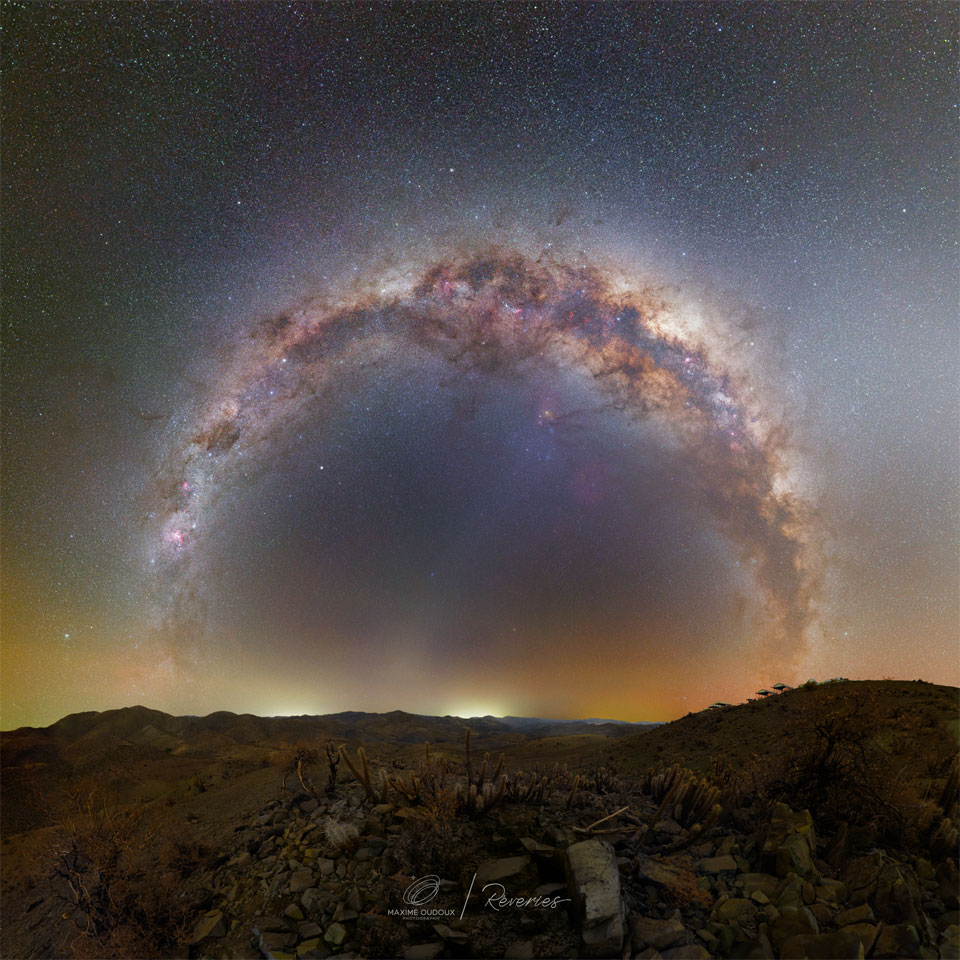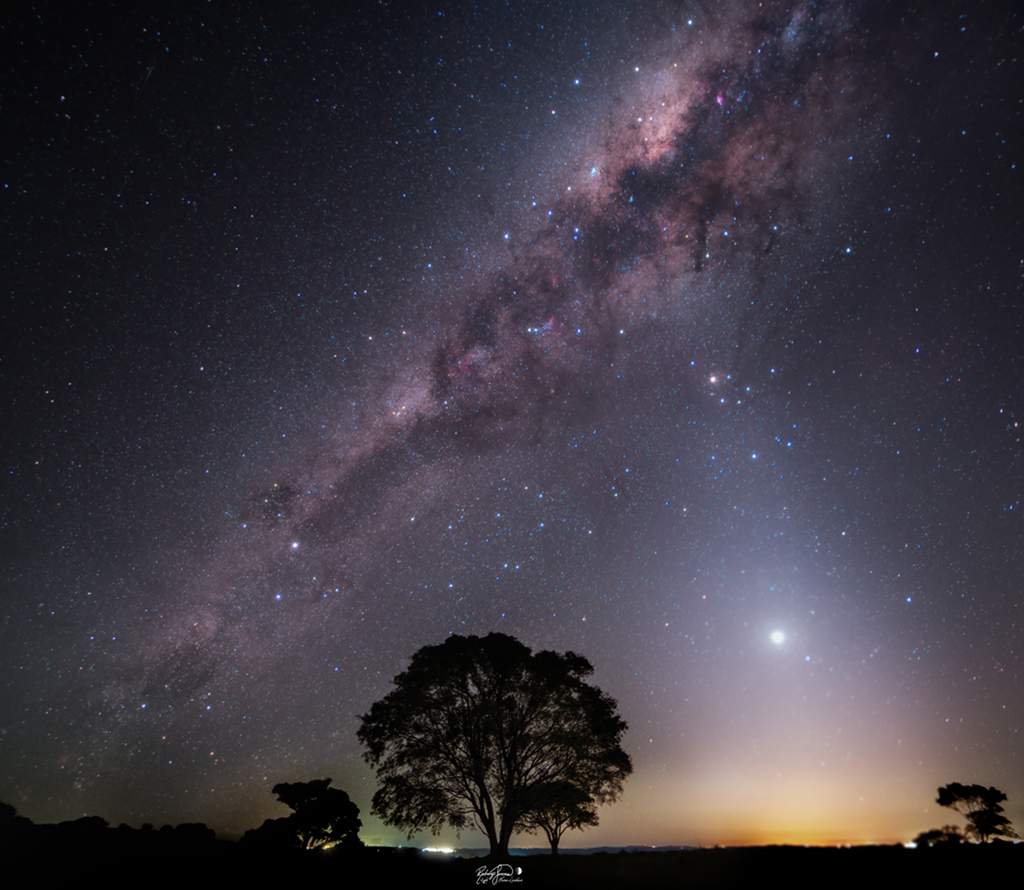双螺旋月食
A wide angle image of the night sky is punctuated by a radio telescope on the lower left. Two bands of light run through the sky: the Milky Way and zodiacal light. The bands intertwine like a double helix. Near the top is an orange orb that is a totally eclipsed moon. Please see the explanation for more detailed information.
这张广角夜空照片左下方可见一架射电望远镜。两条光带横贯天空:银河和黄道光。这两条光带交织在一起,如同双螺旋结构。照片上方附近有一个橙色的光球,那是一轮月全食。有关更多详细信息,请参阅说明。










